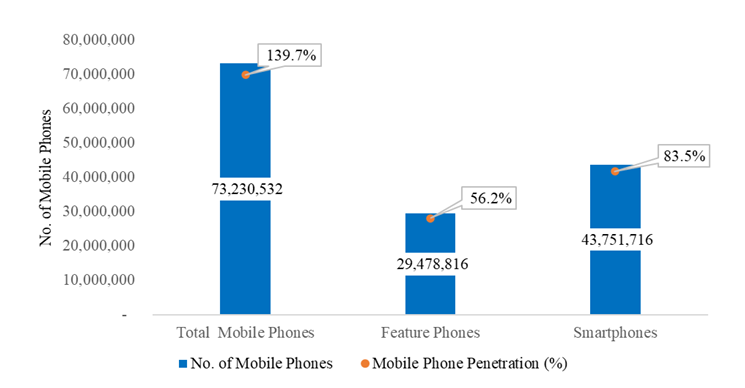
According to the CA’s latest ICT sector report (Q4 2024/25), Kenya had 43.8 million smartphones in use by June 2025 (up from 42.3 million in March 2025), compared to just 29.5 million feature phones. That’s a major drop for feature phones, which stood at 32.6 million just three months earlier.
In other words, smartphones are now not only the dominant device, but feature phones are in free fall. If you’re still wondering how this happened, here’s Safaricom’s account of how Kenya went from 70% feature phones to 70% smartphones in just a year.

Why does this matter? For one, it changes how services are built and delivered. With smartphones in more hands, digital-first offerings like super apps, fintech tools, and e-commerce platforms have a much larger base. No wonder every bank, SACCO, and even government service is racing to build an app.
For telcos, this is also a data gold rush. Smartphones are data-hungry, and with 4G already dominant and 5G use surging, operators are more focused on selling bundles than airtime.
Of course, feature phones aren’t extinct just yet. They remain crucial in rural areas where battery life, affordability, and simplicity matter more than TikTok or Zoom. But the writing is on the wall: the days of the trusty “kabambe” are numbered.
For anyone building tech in Kenya, the takeaway is simple: if your product isn’t optimized for smartphones, you’re already behind.







